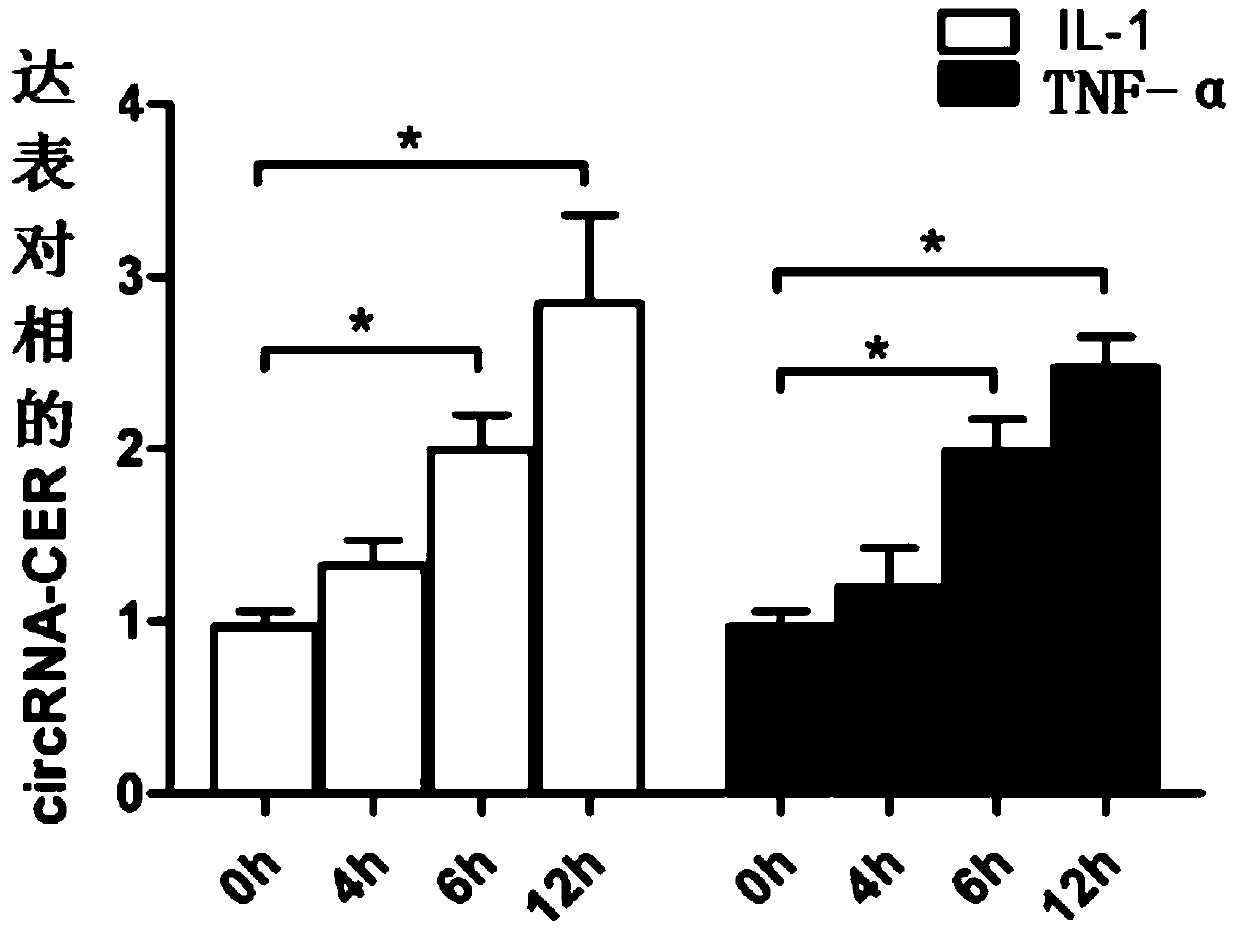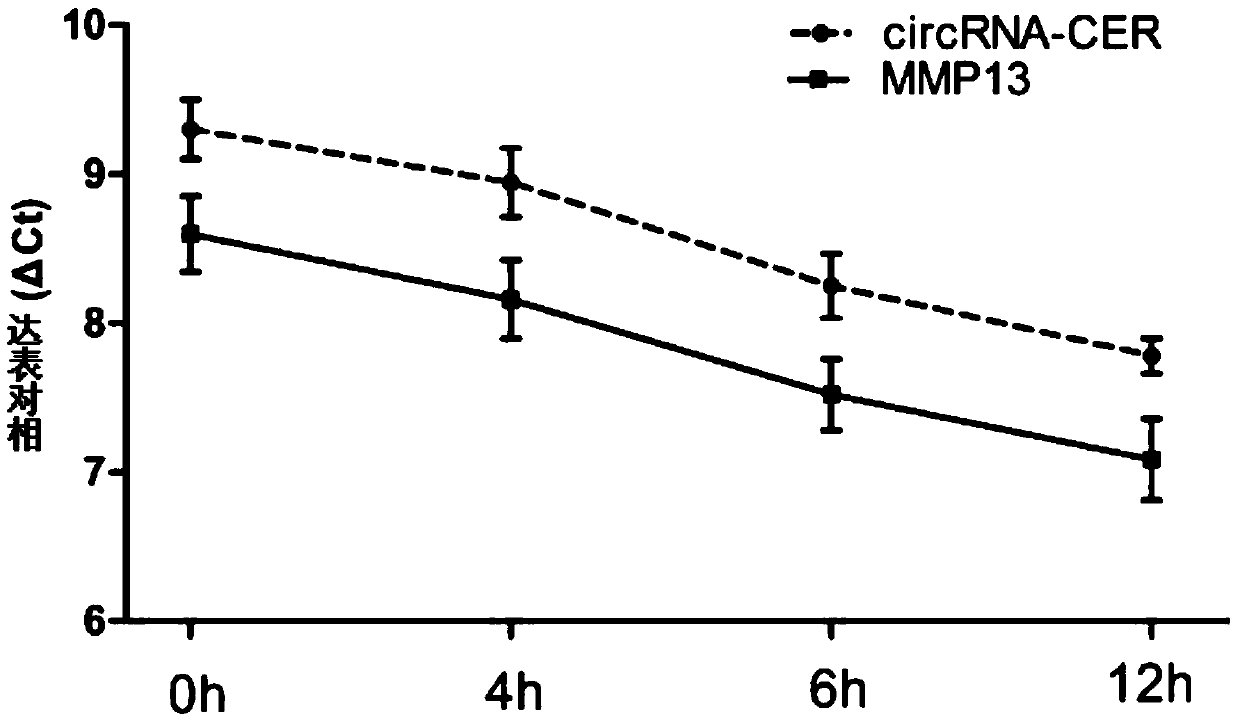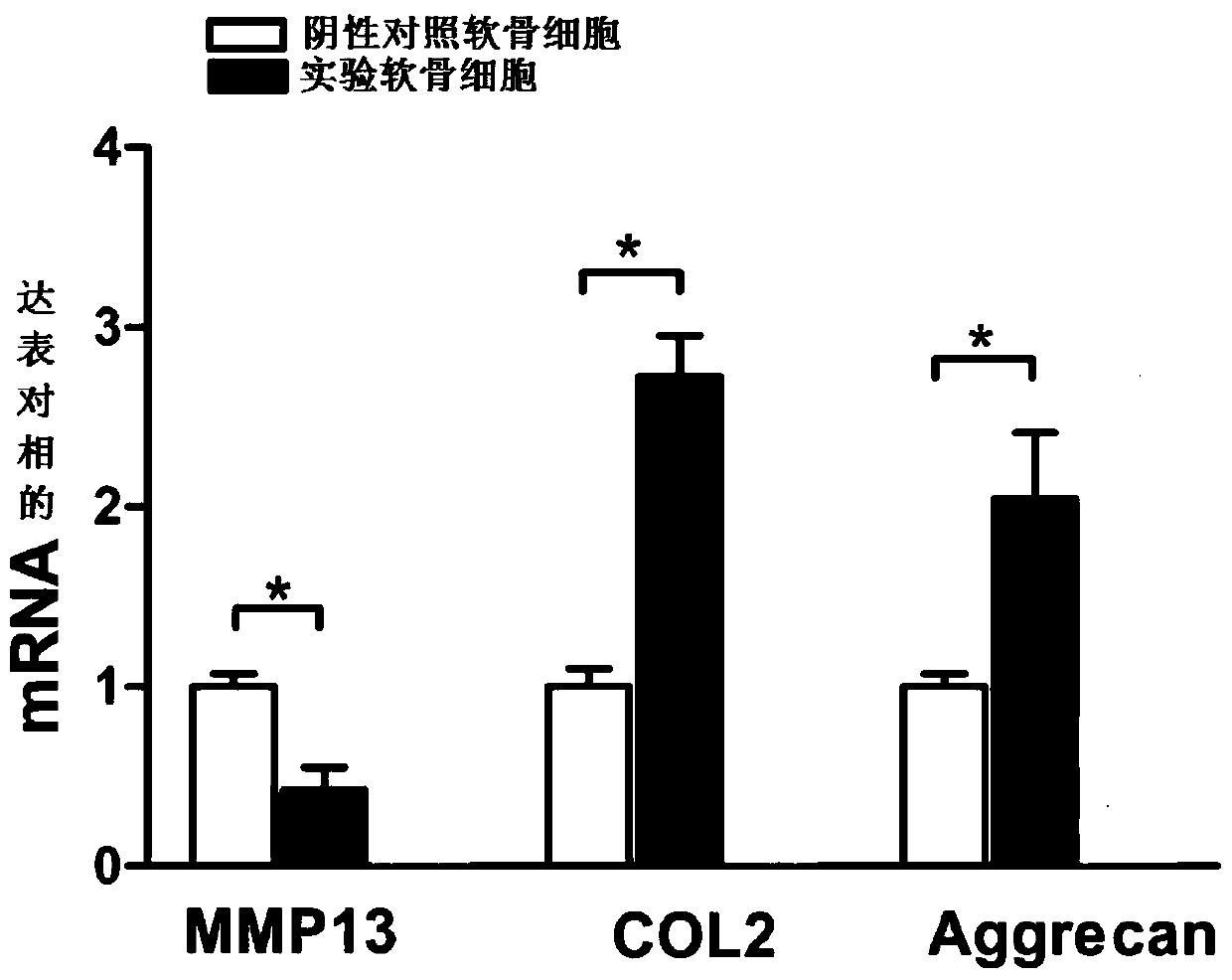A kind of inhibitor of circRNA-cer gene and application thereof
An inhibitor and gene technology, applied in the field of bioengineering, can solve the problems of cartilage damage, increase the difficulty of extracellular matrix synthesis, and reduce the level of
- Summary
- Abstract
- Description
- Claims
- Application Information
AI Technical Summary
Problems solved by technology
Method used
Image
Examples
Embodiment 1
[0061] Step 1. Culture chondrocytes
[0062] Under sterile conditions, cut the cartilage tissue to less than 1cm with scissors 3 Size, and washed repeatedly with PBS buffer containing double antibody. Then, digest with trypsin in an amount 10 times the mass of cartilage tissue at 37° C. for half an hour, and discard the enzyme solution. Then utilize the PBS buffer solution of 0.2% (g / ml) type Ⅱ collagenase at the concentration of 10 times of the mass of cartilage tissue to continue to stir and digest at 37°C for 4 hours, and filter the treated cartilage after removing impurities. The tissue fragments are planted on the bottom surface with an area of 10cm 2 In a new petri dish, the culture medium is low-sugar DMEM complete medium, at 37°C, containing 5% volume concentration of CO 2 CO at saturated humidity 2 Constant temperature incubator culture.
[0063] Step 2. Stimulate chondrocytes with inflammatory factors
[0064] Inflammatory factors: interleukin-1 (IL-1) and tu...
Embodiment 2
[0096] Step 1. Culturing chondrocytes: the chondrocyte culture process in this example is the same as the chondrocyte culture process in Step 1 in Example 1.
[0097] Step 2, in vitro transfection of siRNA molecules
[0098] Negative control siRNA: The selected negative control siRNA is the siRNA molecule of product number siN05815122147-1-5 sold by Guangzhou Ruibo Biotechnology Co., Ltd.
[0099] Experimental siRNA: Using siCatch TM siRNA design intelligently designs the siRNA sequence targeting the circRNA-CER gene, that is, the siRNA sequence that can inhibit the expression of the circRNA-CER gene. The sequence is as follows:
[0100] Sense strand (5'-3') 5'CCCACGCUCCUACAAUGUU dTdT 3'
[0101] Antisense strand (3'-5') 3'dTdT GGGUGCGAGGAUGUUACAA 5'
[0102] 2.1. One day before transfection, inoculate 2×10 5 Put the chondrocytes cultured in Step 1 into a 6-well cell culture plate, and add antibiotic-free medium to each well so that the cell density at the time of transfe...
Embodiment 3
[0112] The present embodiment utilizes Western Blot (Western Blot) to detect the expression levels of each protein in the experimental chondrocytes and negative control chondrocytes, and the specific steps are as follows:
[0113] Step 1. Prepare experimental chondrocytes and negative control chondrocytes, wherein the cultivation and transfection of the experimental chondrocytes and negative control chondrocytes are the same as in Example 2.
[0114] Step 2, determination of total cell protein concentration and Western Blot experiment. Wherein, protein extracted from cultured chondrocytes is used as protein sample. The medium in the chondrocytes was washed twice with PBS buffer solution, and then 200 ul of protein lysate with a mass concentration of 2% SDS was added to each well of a six-well plate to obtain protein samples.
[0115] 2.1. Determination of total cell protein concentration
[0116] The preparation of bovine serum albumin BSA standard substance and the determin...
PUM
 Login to View More
Login to View More Abstract
Description
Claims
Application Information
 Login to View More
Login to View More - R&D
- Intellectual Property
- Life Sciences
- Materials
- Tech Scout
- Unparalleled Data Quality
- Higher Quality Content
- 60% Fewer Hallucinations
Browse by: Latest US Patents, China's latest patents, Technical Efficacy Thesaurus, Application Domain, Technology Topic, Popular Technical Reports.
© 2025 PatSnap. All rights reserved.Legal|Privacy policy|Modern Slavery Act Transparency Statement|Sitemap|About US| Contact US: help@patsnap.com



